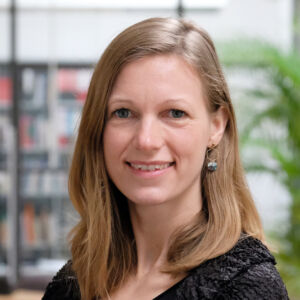Reflections on the UN Groundwater Summit, December 6–8 2022, Paris
From December 7 to 8, 2022, decision-makers, practitioners and researchers gathered in Paris for the first groundwater summit of its kind at UN level. The high-level meeting’s objective was to formulate a clear message on groundwater to pass to the UN water summit in New York, 2023. The groundwater community gathered to draw attention to what many see as missing for example in the formulation of SDG6: Groundwater as a key element in meeting the SDGs. The event that also marked the final phase of the UN water year lasting from March 2022 to March 2023 was held under the title ‘Groundwater: Making the Invisible Visible’.
The event started with a pre-summit side-event held at the UNESCO headquarter and was coordinated by the French section of the International Association of Hydrogeologists (IAH). Preparatory meetings and conferences since 2021 had brought up the core topics of the side-event: The benefit groundwater brings to a variety of SDGs among other things in monitoring and foresight, water and food security, as well as adaptation to climate change. On December 6th, in a tight schedule of panel sessions, groundwater experts prepped for bringing in timely messages to the UN arena. All participants had been provided with access to the key messages on the core topics that would be presented on the main summit: Data and Information, Capacity Development, Innovation, Finance and Governance, the five accelerators towards meeting SDG 6.
Across the panels, experts highlighted the urgency of addressing groundwater as a key resource, and the complexity involved in understanding and managing it. Its systemic importance for ecosystem resilience, agricultural production and water supply makes sustainable groundwater management key to a range of SDGs, from zero hunger to gender equality. Here we see, how closely linked groundwater is to local and international food production chains and corresponding socio-economic structures. Alarming mismatches between regional groundwater availability and its (over)use for agricultural production are linked to a lack of monitoring and data on groundwater availability, and uncertainties of future trends. Where groundwater resources are depleting, water security and food security become competing goals.
In many cases, data and models exist but are not shared with or used by relevant actors in order to initiate decisions, yet decisions need to be taken. As the president of the French IAH section, Patrick Lachassagne, emphasised in one of the day’s sessions “The science of groundwater, [that is] geohydrology, is available everywhere in the world but how it can be applied depends on the availability of data on a given site.” Here he referred to geohydrology as the toolbox for data collection and modelling that could provide scientific grounds for decision-making. The session’s panel continued to discuss governance, legislation and policies, and the need to bring local stakeholders in a given watershed together in order to find an agreement on usage regulations as ‘the main part’ of managing groundwater sustainably.
How does the international groundwater community address the pressing challenges that were identified? The panels of the summit presented a variety of approaches. Positive examples of solutions for local and regional issues often focussed on linking water-rich and water-poor regions, and on providing alternatives to people who make a living of the abstraction of groundwater. Panellists also called for shifts in paradigms – in one session for instance from “domination over water” to a “new culture of water”, connecting people and water, and in another session t from “technical approaches in groundwater management” to a “focus on governance”. Representatives of national and European research organisations also presented living labs that showed the involvement of farmers in groundwater monitoring and soil management, citizen science and other transdisciplinary approaches, and they announced further research and funding programs towards knowledge integration.
However, panellists and participants also raised questions that remained unanswered throughout the day and are therefore difficult to present as part of a message to the UN arena. The questions were: How can we address economic and political forces, such as drivers of import agriculture, at larger scales? How shall we handle knowledge about water footprints and virtual water? How can we redefine “Human Right to Water” so that the international community can be held accountable? What is groundwater knowledge and how do we integrate it? In particular, when it comes to food production systems, case studies vividly illustrated that redirecting virtual water flows is practically impossible. This is, firstly, due to competing interests among multinational corporations and political actors (for instance in Peru), and secondly, because once boreholes are drilled, incentives are low for farmers to cease using the groundwater for food production (for instance in Saudi Arabia and Iran). During the discussions around these questions the complexity of governing groundwater sustainably became tangible, and it became obvious what kind of open questions groundwater research beyond hydrogeology is facing.
In our view, taking a closer look at these questions concerning the drivers and consequences of unsustainable water trade across large distances requires more than linking ‘the science of groundwater’ (hydrogeology) and non-academic experts. Instead, the targeted systemic approaches provide for holistic perspectives that are much needed in order to deal with the complexities at hand. Alongside hydrogeological assessments, understanding the social, political, legal and economic causes and impacts of groundwater depletion is fundamental to managing them. This topic was debated in the session ‘How groundwater changes lives’, as well as in informal interim discussions, but we had the impression that it was barely touched at the majority of panels. Yet, directing virtual water trade towards a sustainable linkage of water-rich and water-poor regions requires an understanding of not only the entanglements local producers find themselves in, but also of those faced by multinational corporations, intermediaries, retailers, and consumers of the traded goods.
Framing these local and supra-regional interconnections as coupled social-ecological systems, the telecoupling framework can provide a suitable lens for analysing respective groundwater problems[1]. Embracing the framework from inter- and transdisciplinary perspectives can enable tackling some of the questions that were raised and have been left unanswered.
The Water Action Agenda, a mandated outcome of the UN 2023 Water Conference, will only be as transformative as the visions and concepts that enter the debate. All in all, hydrogeologists were dominant speakers on the panels, whereas legal scholars, anthropologists, and people trained in other disciplines were present but less visible. Inter- and transdisciplinary concepts and approaches are needed to break up silos because they provide anchors for a common language across disciplines, and give room for epistemic pluralism. The latter is key to co-creating new groundwater visions to meet the SDGs.
Authors
-
![]()
Fanny Frick-Trzebitzky
Dr. Fanny Frick-Trzebitzky is co-head of the Practices and Infrastructures Division at ISOE. -
![]()
Robert Lütkemeier
Dr. Lütkemeier leads the research unit “Water and Land Use” at ISOE – Institute for Social-Ecological Research.
[1] Luetkemeier, Robert, Fanny Frick-Trzebitzky, Dženeta Hodžić, Anne Jäger, David Kuhn, and Linda Söller. 2021. “Telecoupled Groundwaters: New Ways to Investigate Increasingly De-Localized Resources” Water 13, no. 20: 2906. https://doi.org/10.3390/w13202906



